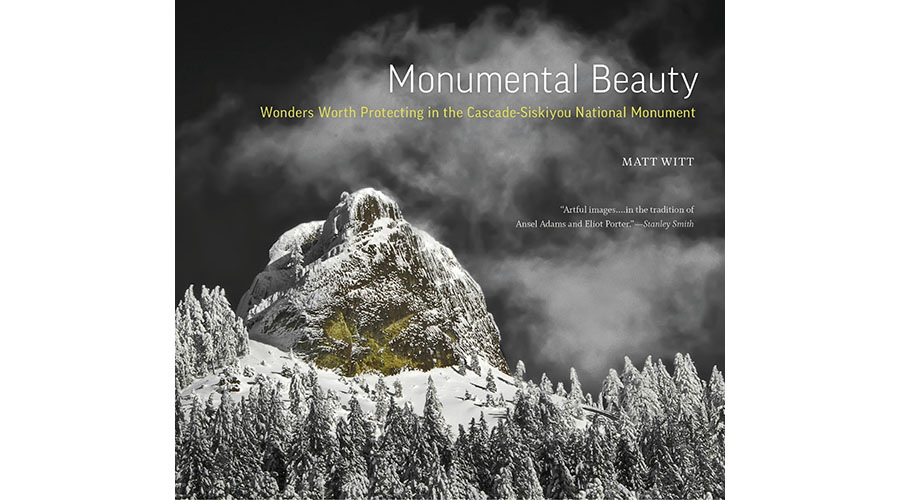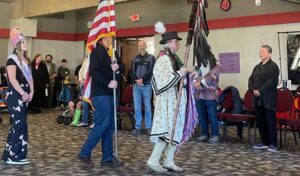‘Monumental Beauty’ captures the majesty and biodiversity of the Cascade-Siskiyou National Monument
By Jeanine Moy
“Monumental Beauty,” a new book of photographs celebrating the beauty and biodiversity of the Cascade-Siskiyou National Monument, is a timely reminder of the value of our public lands.
Looking through the 132 beautiful images and informative captions in this new book by Talent photographer Matt Witt, I thought about how important the monument is to us all.
Seven years ago, with the support of other community members, I started the Vesper Meadow Education Program not far from Howard Prairie Reservoir.
The Vesper Meadow Restoration Preserve, next to the monument, is part of the homelands of the Latgawa, Takelma, Shasta and other local Indigenous peoples. Today, it is a welcoming local hub where diverse community members are restoring streams and wetlands, replacing invasive species with native plants, reestablishing habitat for wildlife, and engaging in scientific monitoring, community education, and nature-inspired art classes. They work in coalition with tribes and many other partners.

But we can’t do what we do by ourselves. Latgawa Creek, which is the lifeblood of our preserve, passes through some of the 114,000 acres that make up the Cascade-Siskiyou National Monument. The vesper sparrows, owls, cranes, bears, coyotes, bobcats, woodpeckers and other species that visit Vesper Meadow don’t recognize human boundaries and depend on the health of nearby monument lands.
Monument’s 25th anniversary
“Monumental Beauty” is timed to celebrate the 25th anniversary of the establishment of the monument by the Clinton administration after decades of advocacy by the Soda Mountain Wilderness Council and many other allies. Designation of a national monument generally protects against logging for commercial purposes, mining, new grazing and other development.
I remember attending an inspiring public forum in 2016 at which more than 500 local residents and the mayors of Ashland and Talent supported expanding the monument to include additional Bureau of Land Management land as public awareness about climate change increased. Shortly afterward, the Obama administration enacted that expansion.
One of the speakers at that public forum was Don Gentry, then the chair of the Klamath Tribes. Gentry contributed a foreword to “Monumental Beauty” in which he writes, “In our culture we have a saying that if you collect duck eggs to eat, you leave some so there will still be duck eggs in the future. Today, protection of the land is urgent as climate change puts our watersheds and forests, and even our homes and culture, at risk.”
Home to hundreds of species
As “Monumental Beauty” reminds us, the Cascade-Siskiyou National Monument, from Pilot Rock and Grizzly Peak to lesser known areas, includes more than 200 species of birds, at least 120 species of butterflies and a rare combination of trees and wildflowers from multiple ecosystems. This land includes many headwater streams that provide clean drinking water for Rogue Valley residents, and recreation and education opportunities for local residents. And it is protected for the natural beauty that we as Southern Oregonians take pride in.
All funds generated by the book’s $19.95 sale price go to local nonprofit groups that promote and defend the monument. That is particularly timely as the Trump administration and its corporate allies are attempting to prioritize logging, drilling and mining on our special public lands instead of conservation for now and for future generations.
“Monumental Beauty” is available at MonumentalBeauty.org and at MattWittPhotography.com.
Jeanine Moy is director of the Vesper Meadow Education Program.


















![United States’ cities average electricity price per kWh. U.S. Bureau of Labor Statistics, APU000072610], retrieved from FRED, Federal Reserve Bank of St. Louis; https://fred.stlouisfed.org/series/APU000072610, Nov. 10, 2025.](https://ashland.news/wp-content/uploads/2025/11/Power-graphic.jpg)


